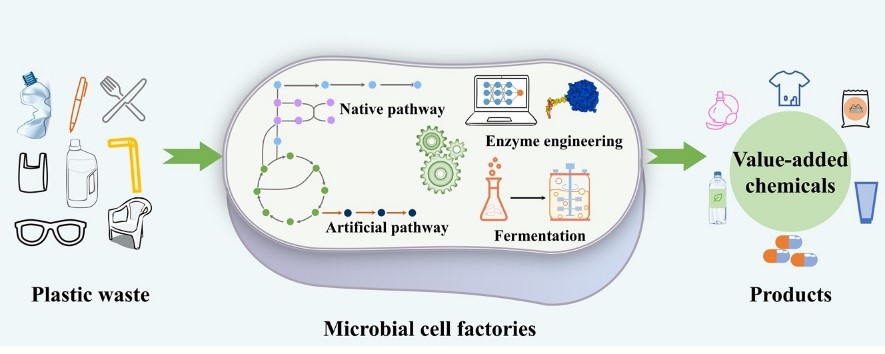Found 2 results
Review
20 May 2024
Advancements in the Bio-degradation of Plastic Waste into Value-added Chemicals: A
Recent Perspective
Plastics are an essential component of modern life, but the plastic waste has caused significant environmental pollution and economic losses. The effective solution to these problems is the biodegradation and high-value conversion of plastic waste. After biodegradation, plastic waste is broken into smaller molecules and eventually transformed into innocuous substances like water, carbon dioxide and biomass. High-value conversion enables plastic waste to be converted into products with higher economic value and environmental friendliness. Based on this, we summarize the biodegradation methods of bioplastics and analyze the shortage of these methods. Subsequently, we summarize the progress of converting the degradation products into value-added chemicals, comprehensively analyze the advantages and disadvantages of these bioconversion process, and propose some strategies to address these disadvantages. Finally, we analyze the significance of establishing a microbial-based conversion process that integrates the degradation and the conversion, and propose some potential strategies.

Review
15 August 2023Green Composites Using Naturally Occurring Fibers: A Comprehensive Review
Depletion of non-renewable resources and health hazards of petroleum-based polymers and plastics has enforced the development of eco-friendly materials. The use of conventional plastics has to be minimized and can be replaced with environmentally friendly and sustainable bio-based polymers or biopolymers due to extensive environmental impact. A major share of petroleum-based polymers is used for polymeric composites with research focus on green composites and biocomposites containing renewable/bioderived matrix polymer and fillers from naturally occurring fibers. Biocomposites hold great promise to replace petroleum-based polymer composites owing to their lower cost, non-toxicity, abundance of raw material, renewability, and high specific strength. All these merits of biocomposites have led to an increment in the development of new biocomposites with enhanced properties, wide applicability and ever demanding criteria. The recently published review studies detailed the raw materials used, fabrication techniques, characterization, and applications including biodegradation and rheological studies performed in recent years. This review covers all the important properties of biocomposites along with detailed description of synthesis, properties, characterizations and applicability of these green composites in several areas. The review also focuses on their raw materials, types, recent biocomposites, processing techniques, characterizations, applications, and current challenges with future aspects.
